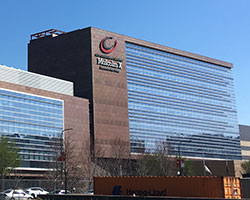
New Projects Examine Barriers for English-Language Learners
 According to the Community College Consortium for Immigrant Education, English as a second language (ESL) programs are among the fastest-growing programs in community colleges and other adult education settings. English-language learners — a group that includes K-12 and postsecondary students, adult learners, and recent immigrants, among others — are a diverse subpopulation who disproportionately come from low-income backgrounds. Unfortunately, the deck is often stacked against them. Some scholars, such as Jiménez-Castellanos of The Education Trust, describe English-language learners as being “triple-segregated” by race, income, and language, though a forthcoming white paper from WestEd claims two additional factors: 1) a lack of data about these learners and the systems that serve them and 2) a lack of alignment and coordination between the multiple sectors that comprise English language programs.
According to the Community College Consortium for Immigrant Education, English as a second language (ESL) programs are among the fastest-growing programs in community colleges and other adult education settings. English-language learners — a group that includes K-12 and postsecondary students, adult learners, and recent immigrants, among others — are a diverse subpopulation who disproportionately come from low-income backgrounds. Unfortunately, the deck is often stacked against them. Some scholars, such as Jiménez-Castellanos of The Education Trust, describe English-language learners as being “triple-segregated” by race, income, and language, though a forthcoming white paper from WestEd claims two additional factors: 1) a lack of data about these learners and the systems that serve them and 2) a lack of alignment and coordination between the multiple sectors that comprise English language programs.
To address this issue, Ascendium recently invested in a pair of initiatives to gather more information about English-language learners. The first, via WestEd, looks specifically at the structural barriers faced by this population. A study of English-language learners in California Community Colleges found that 42% of students who entered directly into an English pathway completed transfer-level English within three years compared to 24% of those in the ESL pathway. This suggests the pathways designed as remediation on-ramps (i.e., lengthy, non-credit ESL programs) can serve as structural barriers themselves. Using information from research, policy, and institutional practice, this initiative will provide recommendations for reforming pathways that serve English-language learners as they enter a for-credit postsecondary degree program.
We are also supporting this population of learners through a grant to Teachers College, Columbia University and its Community College Research Center (CCRC). As part of that effort to improve policy and practice for adult students who are learning English as a second language, CCRC (in collaboration with City Colleges of Chicago) will conduct descriptive progression and outcomes analyses for more than 50,000 students over 12 years. City Colleges of Chicago will then use this research to undertake needed reforms. Our hope is that both initiatives will lay the foundation for broader efforts to fundamentally change the ways in which English-language learners are provided the opportunity and support to succeed in postsecondary education.
“We applaud our partners for bringing attention to the barriers impacting English-language learners,” says Sue Cui, a senior program officer in Ascendium’s Remove Structural Barriers to Success focus area. “Through these investments, we hope to spur a call-to-action to apply insights to reform pathways so that more English-language learners have the opportunity to obtain degrees.”


